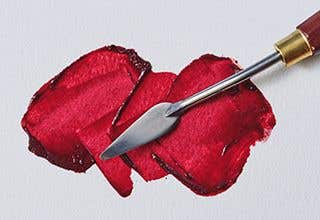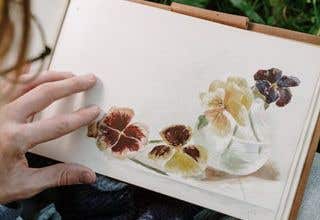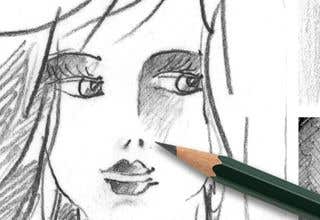Watercolour pencils are a versatile art medium that combines the characteristics of coloured pencils and watercolour paints. They consist of a core made from water-soluble pigments encased in a wooden barrel, similar to traditional coloured pencils. The pigments used in watercolour pencils are water-soluble, meaning that when water is applied to them, they dissolve and spread, creating a watercolour effect.
Watercolour pencils are popular among artists for their versatility, portability, and ease of use. They are suitable for various techniques and styles, including detailed illustrations, landscapes, portraits, and more. Additionally, they are convenient for artists who enjoy working both indoors and outdoors due to their portable nature and minimal mess compared to traditional watercolour paints.
This guide covers essential supplies, techniques, and tips to get you started, whether you're a seasoned artist or a beginner eager to experiment. From recommended paper and brushes to mastering wet-on-dry and wet-on-wet applications, let's learn more about this versatile medium!
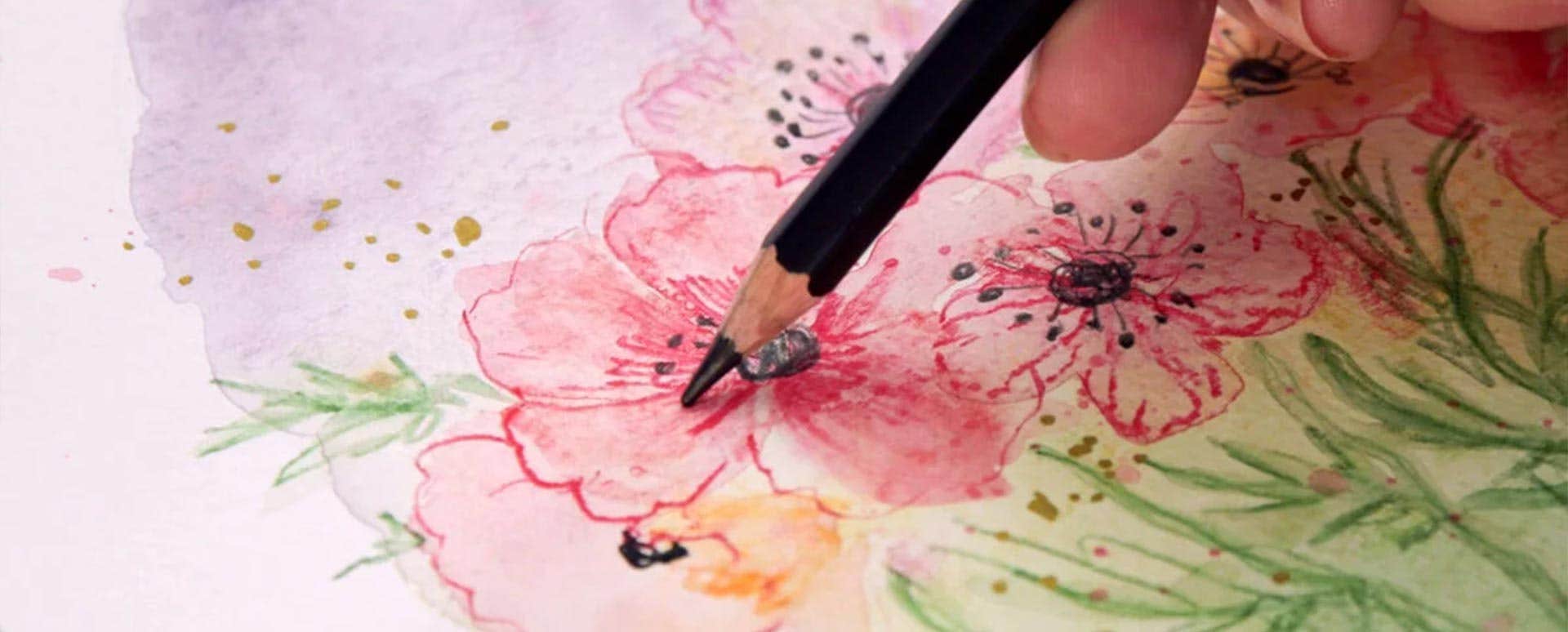
Grab These Essential Supplies
Watercolour pencils: This is the primary medium you'll be working with. Invest in a set of high-quality watercolour pencils with a variety of colours to give you flexibility in your artwork.
Paper: Choose watercolour paper or heavyweight mixed-media paper designed to handle wet media. The paper should have a textured surface to help hold the pigment and water.
Brushes: Have a selection of watercolour brushes in different sizes and shapes. Round brushes are versatile for most watercolour techniques, while flat brushes are useful for washes and larger areas. Synthetic brushes are typically preferred for watercolour pencils as they hold water well and are more durable.
Water container: Use a container of clean water to dip your brushes in and activate the watercolour pencil pigment. You can also use an aquabrush, which has a built-in water reservoir for added convenience.
Palette: You'll need a palette or mixing surface to dilute and mix your watercolour pencil pigments with water. This can be a traditional watercolour palette or simply a ceramic plate or plastic palette.
Paper towels or tissue: Keep paper towels or tissue handy for blotting excess water or pigment from your brush and for creating texture or lifting colour from your artwork.
Pencil sharpener: Ensure your watercolour pencils are sharp for precise lines and details. Use a sharpener specifically designed for coloured pencils to avoid breakage and maintain the pencil's core integrity.
Masking fluid (optional): If you want to preserve white areas or create intricate details, you can use masking fluid applied with a fine brush. This liquid latex solution protects the paper from water and pigment, allowing you to paint freely over it and then peel it off once dry.
Fixative spray (optional): Consider using a fixative spray to protect your finished watercolour pencil artwork from smudging or fading. This is especially useful if you plan to display or frame your artwork.
Drawing board or easel: Use a drawing board or easel to support your paper while working. This helps prevent warping or buckling of the paper and allows you to work comfortably at an angle.
With these basic art supplies, you'll have everything you need to start creating beautiful artwork using watercolour pencils. As you gain experience, you may discover additional tools or materials that suit your specific style and preferences.
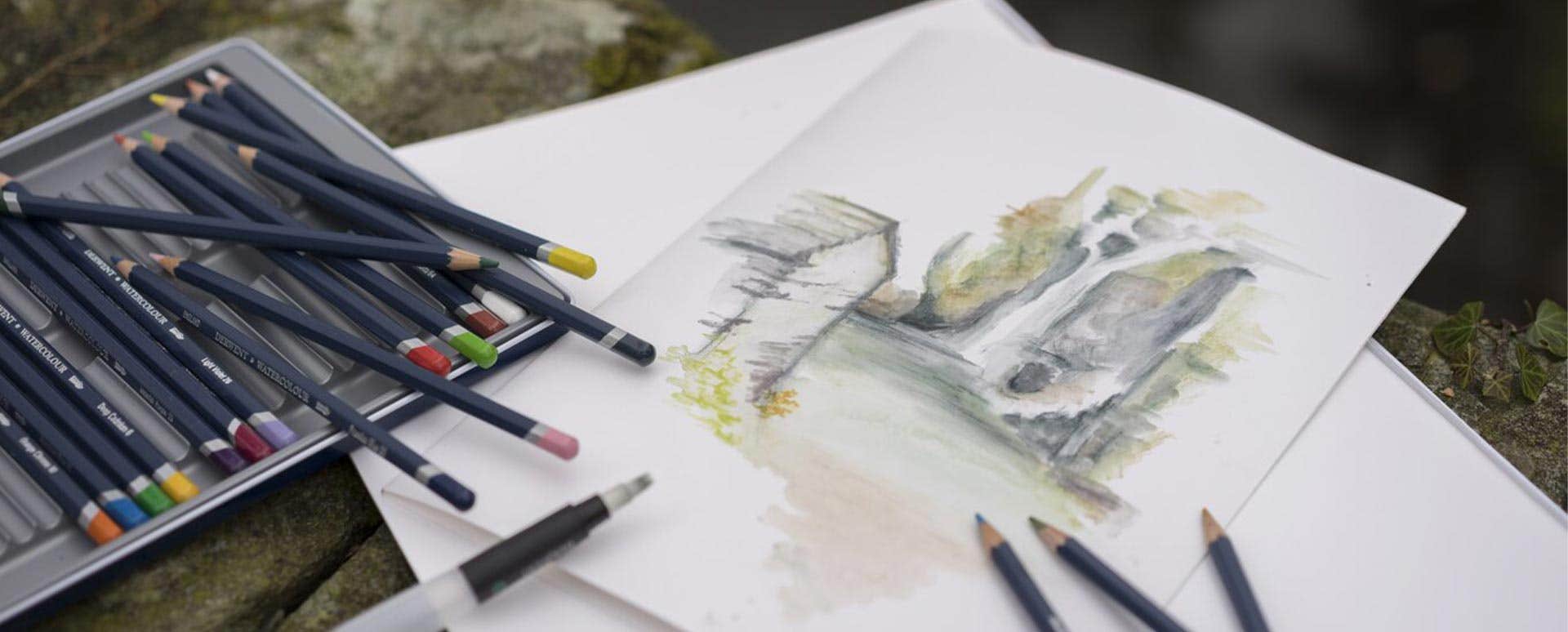
Try these Watercolour Pencil Techniques
There are several watercolour pencil techniques you can experiment with to achieve different effects in your artwork. Here are some popular ones:
Dry Application: Apply watercolour pencils directly onto dry paper, using them like traditional coloured pencils. Layer different colours and vary the pressure to create depth and texture.
Wet-on-Dry: Apply watercolour pencils onto dry paper, then use a wet brush to activate the pigment. This technique allows for precise control over where the colour is applied and how it blends.
Wet-on-Wet: Wet the paper with clean water using a brush, then apply watercolour pencil directly onto the wet surface. The pigment will spread and blend more freely, creating soft and diffused effects.
Layering: Build up layers of watercolour pencil colours to create depth and richness in your artwork. Start with lighter colours and gradually add darker tones on top to achieve a dimensional effect.
Blending: Use a dry brush or a blending stump to blend colours together on the paper. This technique helps smooth out harsh lines and transitions between colours, creating a seamless look.
Lifting: Apply watercolour pencil pigment to the paper, then use a clean, damp brush or a kneaded eraser to lift or soften the colour. This technique allows you to create highlights or adjust areas of your artwork even after they've dried.
Splattering: Dip a wet brush into watercolour pencil pigment, then flick it onto the paper to create splatter effects. This technique adds texture and spontaneity to your artwork.
Masking: Use masking fluid to preserve areas of white paper or create intricate details. Apply the masking fluid with a brush, allow it to dry completely, then apply watercolour pencil over it. Once your artwork is dry, gently rub off the masking fluid to reveal the preserved areas.
Mixing with Other Media: Experiment with combining watercolour pencils with other art mediums such as traditional watercolour paints, coloured pencils, or ink. This allows you to create mixed-media artworks with unique textures and effects.
Scratching: Use a sharp tool like a craft knife or the tip of a watercolour pencil to scratch or etch into the paper's surface. This technique can create fine lines, textures, or highlights in your artwork.
These are just a few watercolour pencil techniques to get you started. Feel free to explore and combine them to discover your own unique style and effects.
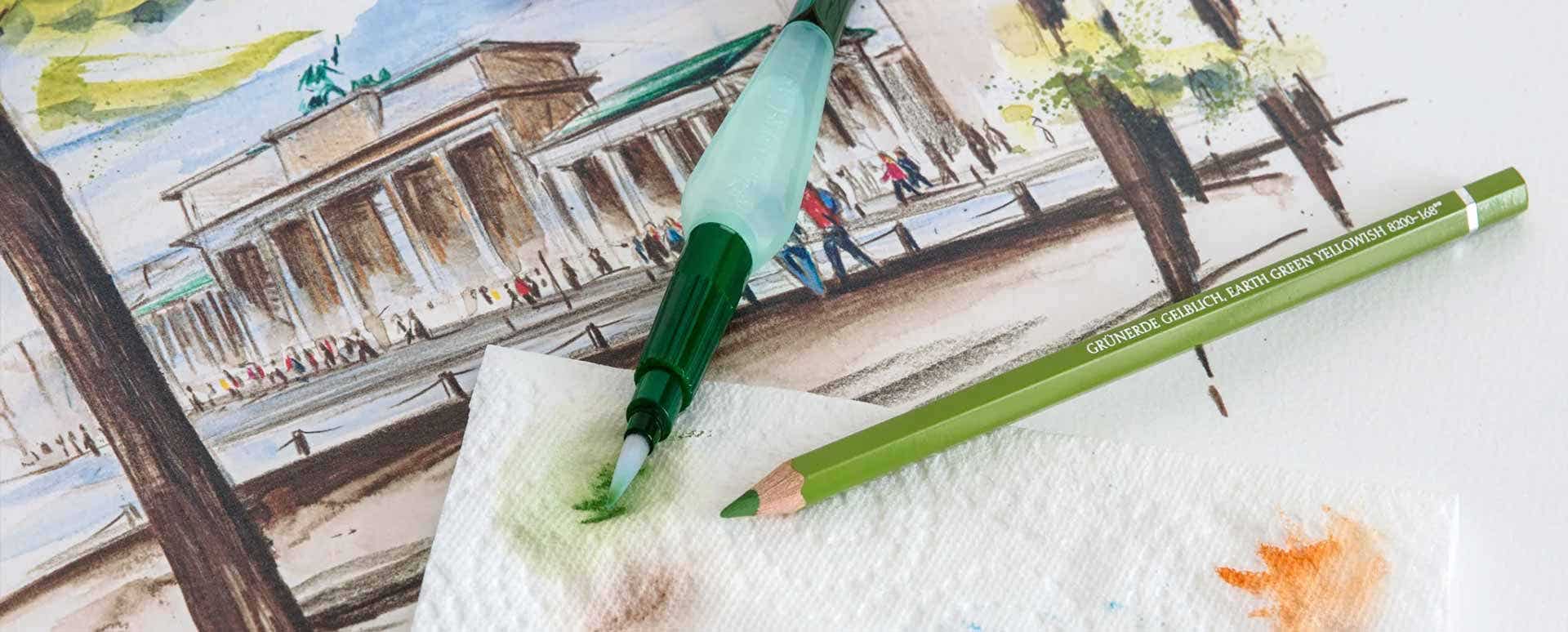
Our Top Tips for Working with Watercolour Pencils
Use quality watercolour pencils: Invest in good quality watercolour pencils as they will have higher pigment concentration and better lightfastness. This ensures vibrant colours that last longer without fading.
Experiment with different paper types: Watercolour pencils work best on watercolour paper or heavyweight mixed-media paper. These papers can handle the water and pigment without warping or buckling.
Start with light layers: Begin by applying light layers of colour using gentle pressure. You can always add more layers to intensify the colour, but it's difficult to lighten areas once they've been saturated with pigment.
Practice blending techniques: Experiment with various blending techniques such as wet-on-dry, wet-on-wet, and dry-on-dry. Each technique produces different effects, so practice to understand how they work and when to use them.
Use a water brush or regular brush: You can use a water brush, which has a reservoir for water, or a regular brush dipped in water to activate the pigment. Be mindful of the amount of water you use to control the intensity of the colours and avoid over-saturating the paper.
Keep a tissue or paper towel handy: Have a tissue or paper towel nearby to blot excess water or pigment from your brush. This helps control the amount of water on your paper and allows you to create lighter washes or correct mistakes.
Experiment with lifting: Watercolor pencils allow you to lift colour from the paper even after it has dried. Use a clean, damp brush or a kneaded eraser to lift or soften areas of colour to create highlights or adjust the overall look of your artwork.
Combine with other mediums: You can combine watercolour pencils with other mediums such as traditional watercolour paints, coloured pencils, or ink to create mixed-media artworks with unique textures and effects.
Protect your work: Once your watercolour pencil artwork is complete and dry, consider using a fixative spray to protect it from smudging or fading. Alternatively, you can frame it behind glass to preserve its colours and longevity.
Practice and have fun: Like any art medium, practice is key to mastering watercolour pencils. Experiment with different techniques, subjects, and styles, and don't be afraid to make mistakes. Enjoy the process of creating and discovering what works best for you.
If you need further guidance or you want to check out our range of pencils, brushes and papers, come and see our friendly staff in store. Many of our staff are artists themselves and they are always happy to share their expert knowledge.







